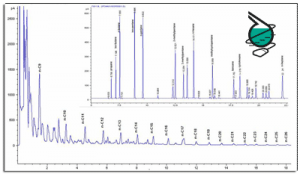 ASTM has recently announced a new standard: D7900-13 “Standard Test Method for Determination of Light Hydrocarbons in Stabilized Crude Oils by Gas Chromatography”. The standard was developed in a joint effort with the Energy Institute, London and is the technical equivalent of that institute’s IP 601 standard.
ASTM has recently announced a new standard: D7900-13 “Standard Test Method for Determination of Light Hydrocarbons in Stabilized Crude Oils by Gas Chromatography”. The standard was developed in a joint effort with the Energy Institute, London and is the technical equivalent of that institute’s IP 601 standard.
D7900-13 stipulates a way to determine the boiling range distribution of hydrocarbons up to nC9. These results can be combined with the results from Test Method ASTM D7169 and IP 545 to give a full boiling point distribution of a crude oil.
ASTM D7169 and IP 545 methods can approximate the boiling point distribution of crude oils in the nC4-nC8 range but cannot provide a reliable quantitative analysis. Both Standards recognize and document the errors that can exist in the light ends portion of crude oils due to poor resolution in the C1 to C9 range and the effects of CS2 quenching.

Envantage MergeIT software combines the boiling point distribution results from two analyses into one.
D7169 includes a procedure in the Appendix that describes how to perform a separate analysis of the light ends and combine these results with the boiling point distribution results of the D7169 results. D7900-13 formally addresses this procedure.
ASTM now has a D7900/D7169 Standard Test pair to match the IP 601/IP 545 Standard Test pair.
Here at Envantage we have been using the IP 601 Standard for quite some time in our SimDist/DHA Light Ends/MergeIT Analyzer. This analyzer uses our Dragon MergeIT software to combine D7169 SimDis data with DHA data. While there are no significant differences from the IP 601 Standard, we will now be applying the ASTM D7900 Standard and referencing it in our documentation.


